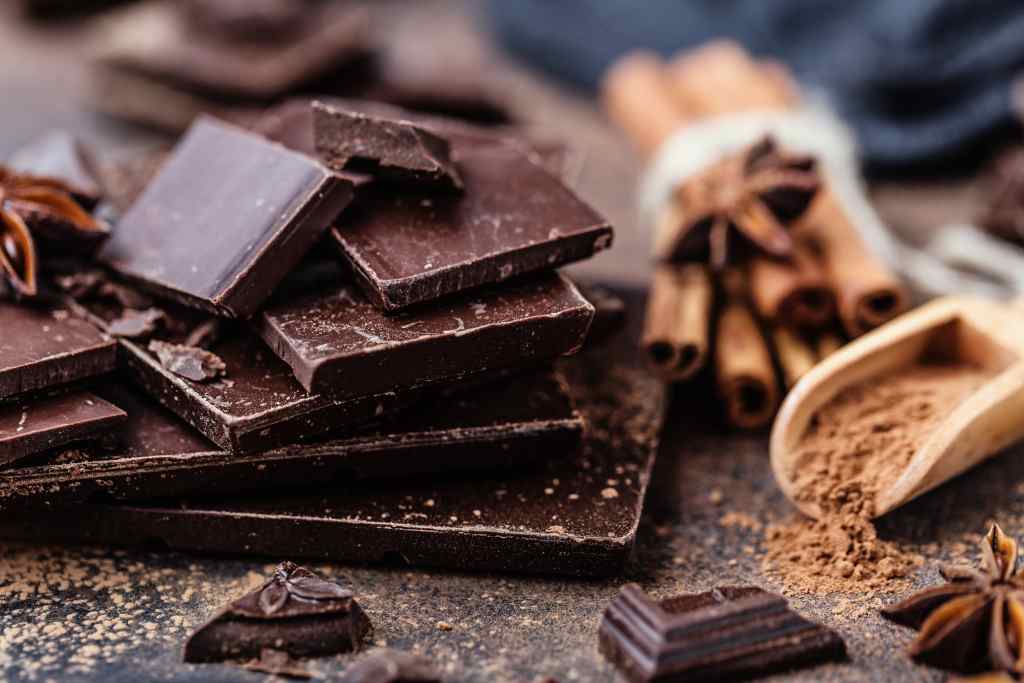Dark chocolate, often regarded as a guilty pleasure, has garnered attention not only for its rich flavor but also for its numerous health benefits. Made from cocoa solids, cocoa butter, and sugar, dark chocolate contains higher cocoa content than its milk chocolate counterpart, making it a more nutritious option. Recent research in neuroscience has begun to uncover the mechanisms behind our cravings for dark chocolate and the potential health benefits associated with its consumption. This article explores the benefits of dark chocolate, the science behind its allure, and the knowledge that can help us appreciate this delicious treat in a healthier way.
Nutritional Profile of Dark Chocolate

Dark chocolate is rich in various nutrients that contribute to its health benefits. Here’s a breakdown of the nutritional components found in a typical serving (about 1 ounce or 28 grams) of dark chocolate with 70-85% cocoa content:
1. Macronutrients
- Calories: Approximately 170-200 calories per ounce.
- Fat: About 12-15 grams, primarily healthy fats from cocoa butter.
- Carbohydrates: Roughly 13-15 grams, including sugars and fiber.
- Protein: Approximately 2 grams.
2. Vitamins and Minerals
Dark chocolate is a source of several essential vitamins and minerals, including:
- Iron: Important for oxygen transport in the blood.
- Magnesium: Vital for muscle and nerve function, as well as energy production.
- Copper: Plays a role in iron metabolism and the formation of red blood cells.
- Manganese: Involved in bone formation and metabolism.
3. Phytochemicals
One of the standout features of dark chocolate is its high content of flavonoids, particularly epicatechin. These powerful antioxidants are known for their ability to combat oxidative stress and inflammation in the body. Flavonoids also contribute to the health benefits associated with dark chocolate consumption.
Health Benefits of Dark Chocolate
1. Heart Health
Numerous studies have suggested that dark chocolate can support heart health. The flavonoids in dark chocolate have been shown to improve endothelial function, which is crucial for maintaining healthy blood vessels. Regular consumption of dark chocolate may help lower blood pressure, improve blood flow, and reduce the risk of heart disease. This knowledge aligns with findings from various clinical studies that indicate a correlation between dark chocolate consumption and improved cardiovascular health.
2. Mood Enhancement
One of the most intriguing aspects of dark chocolate is its potential to enhance mood. Research indicates that dark chocolate can stimulate the production of endorphins, the body’s natural feel-good chemicals. Additionally, it contains serotonin precursors, which may help alleviate symptoms of depression and anxiety. This connection between dark chocolate and mood improvement is particularly relevant in understanding the cravings many people experience for this treat.
3. Cognitive Function
Emerging research suggests that the flavonoids in dark chocolate may have positive effects on cognitive function. Studies have shown that regular consumption of dark chocolate can improve memory, attention, and overall cognitive performance. The neuroprotective properties of flavonoids may enhance blood flow to the brain and promote the growth of new neurons, which is essential for maintaining cognitive health as we age.
4. Blood Sugar Regulation
Dark chocolate may also play a role in regulating blood sugar levels. Some studies have suggested that the consumption of dark chocolate can improve insulin sensitivity, which is crucial for preventing type 2 diabetes.
5. Skin Health
The antioxidants found in dark chocolate can also benefit skin health. Flavonoids help protect the skin from UV damage, improve hydration, and enhance blood flow to the skin. Regular consumption of dark chocolate may contribute to a healthier complexion and reduce the signs of aging. This connection between dark chocolate and skin health adds another layer to its appeal as a nutritious indulgence.
The Neuroscience Behind Cravings for Dark Chocolate
Understanding why we crave dark chocolate involves delving into the neuroscience of cravings and the brain’s reward system. Here are some key points:
1. The Brain’s Reward System
When we consume foods we enjoy, such as dark chocolate, the brain releases dopamine, a neurotransmitter associated with pleasure and reward. This release reinforces the behavior, making us more likely to seek out that food again. The combination of sugar and fat in dark chocolate activates the brain’s reward pathways, leading to cravings.
2. Emotional Connections
Cravings for dark chocolate can also be tied to emotional states. Many people associate chocolate with comfort, celebration, or indulgence, creating a psychological connection that can trigger cravings during stressful or emotional times. Understanding these emotional triggers can provide valuable knowledge for managing cravings and making healthier choices.
3. The Role of Flavonoids
The flavonoids in dark chocolate may also influence cravings by affecting mood and cognitive function. As mentioned earlier, dark chocolate can enhance mood and reduce feelings of stress, which may lead to a desire for more of this comforting food. This creates a feedback loop where the consumption of dark chocolate improves mood, leading to further cravings.
How to Incorporate Dark Chocolate into Your Diet
1. Choose High-Quality Dark Chocolate
When selecting dark chocolate, opt for varieties that contain at least 70% cocoa to maximize health benefits. Higher cocoa content means more flavonoids and less sugar. Look for brands that use minimal processing and natural ingredients.
2. Mindful Consumption
Practicing mindful consumption can enhance your enjoyment of dark chocolate while helping you manage cravings. Take the time to savor each bite, paying attention to the flavors and textures. This can help you feel more satisfied with smaller amounts.
3. Pairing with Other Foods
Dark chocolate can be paired with a variety of foods to create balanced snacks. Consider combining it with nuts, fruits, or yogurt for added nutrients. For example, dark chocolate-covered almonds provide healthy fats and protein, making for a satisfying treat.
4. Use in Recipes
Incorporate dark chocolate into recipes to enjoy its benefits in different forms. Dark chocolate can be used in smoothies, baked goods, or even savory dishes like chili. Experimenting with recipes allows you to enjoy dark chocolate in creative ways while reaping its health benefits.
Conclusion
The benefits of dark chocolate extend beyond its delightful taste; they encompass a range of health advantages supported by scientific research. From promoting heart health and enhancing mood to improving cognitive function and regulating blood sugar, dark chocolate offers a wealth of benefits that make it more than just a guilty pleasure. Understanding the knowledge behind our cravings for dark chocolate and its nutritional profile empowers individuals to enjoy this treat in a balanced and health-conscious manner.
As we continue to explore the science behind dark chocolate and its effects on the brain and body, it becomes clear that this superfruit can be a valuable addition to a healthy diet. By choosing high-quality dark chocolate and consuming it mindfully, we can indulge in its rich flavors while reaping the numerous health benefits it has to offer. So go ahead, enjoy that piece of dark chocolate—your body and mind may thank you for it!
Read also about Study Headlines to keep up with the latest research findings, academic breakthroughs, and trends shaping the world of education and innovation.


